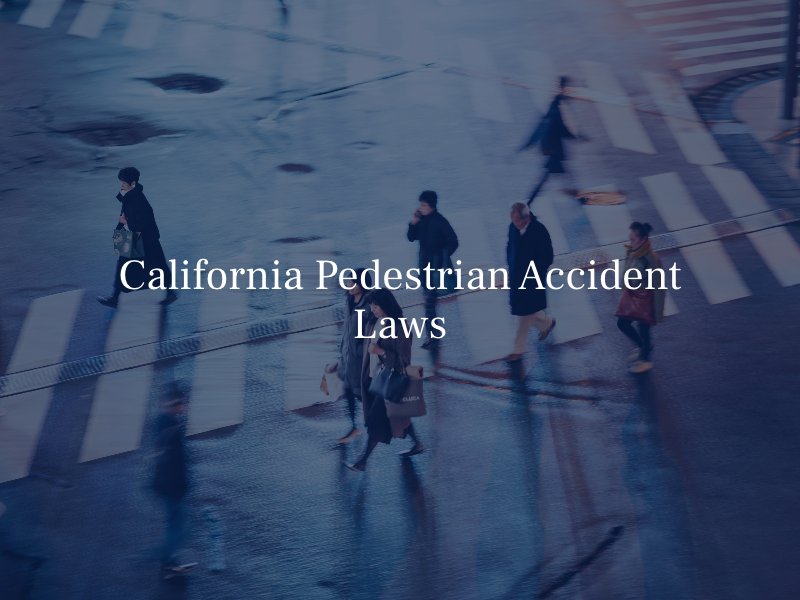California Pedestrian Accident Laws
January 11, 2023 Posted In Pedestrian Accident
California has laws in place to protect pedestrians who are hit by a motor vehicle. If a driver’s negligence was responsible for a collision, injured pedestrians have the right to hold them accountable for their losses.

California Negligence Laws
Understanding how liability works in California after a pedestrian accident is critical to recovering the compensation you deserve. Under state law (CIV § 1714), whichever party’s negligence is responsible for causing a pedestrian accident must pay for resulting damages. Therefore, each party is assigned a percentage of fault, and a plaintiff (victim) can hold a defendant (at-fault party) accountable for their share of damages. Drivers can be 100% responsible in many cases then pedestrian accident victims have the right to recover 100% of their losses. However, it is possible for pedestrians to be partially or entirely liable. For example, if a pedestrian is 20% liable for texting while walking, they can recover 80% of the compensation awarded.
It is also possible for third parties to be partially or completely liable in a pedestrian accident. For example, a government entity if hazardous road conditions contributed to the collision, such as a pothole, a design flaw in an intersection, improper signage, etc., or a vehicle manufacturer if a defective part caused the crash.
Right of Way Laws
Below is a list of laws established under CVC 21949 that dictate when a driver or pedestrian has the right of way, which can impact liability for an accident.
- Pedestrians have the right of way when crossing a roadway within any marked or unmarked crosswalk at an intersection.
- Drivers must not stop within a crosswalk.
- Pedestrians are never allowed to jaywalk.
- Drivers must never pass a vehicle stopped at a crosswalk since they may be stopped to wait for a pedestrian crossing.
- Drivers can only drive on a sidewalk when entering or exiting a garage or alleyway and must yield to any pedestrians.
- Blind pedestrians using a cane or a guide dog always have the right of way at all intersections. It can be considered a crime if a driver fails to yield to a blind pedestrian, and they may face up to six months in jail and a fine of up to $1,000.
When a pedestrian accident occurs because a driver or pedestrian fails to yield the right of way, it can be used as evidence of fault.
Statute of Limitations
California has a statute of limitations that limits the amount of time a pedestrian accident victim has to file an injury claim. This law helps ensure that the legal process moves forward and that evidence remains available. The deadline is two years from the date of the injury (CCP § 335.1). When the statute of limitations has run, you will likely be barred from recovering compensation at all, and there are limited exceptions. If your Riverside pedestrian accident was caused by the negligence of a government agency or employee, an injury claim must be filed within six months of the injury. If your claim is rejected, you have another six months to file a lawsuit.